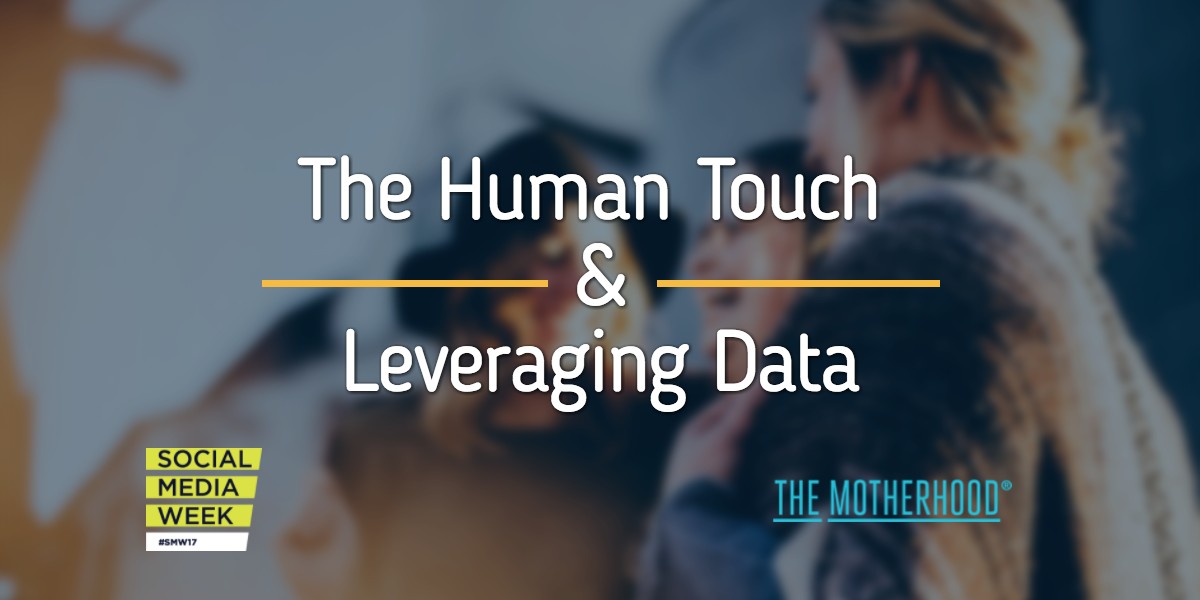To serve our clients and network as best we can, The Motherhood attends (in person or virtually) as many industry conferences as possible. This week was Social Media Week London, where industry experts convened to share insights on all things digital. Take a look at some of our top takeaways from the event:
The Importance of A HUMAN APPROACH
In his session “Process vs. People: Everything You Need to Know about Influencer Marketing,” Justin Rezvani, founder & CEO of theAmplify, explained the symbiotic relationship between technology and humans when it comes to influencer marketing. While technology is undoubtedly a valuable tool for any influencer marketing campaign — especially with operations — when it comes to building long-term relationships with influencers and identifying, capturing and participating in meaningful conversations, technology simply can’t replace the human touch.
Industry Principal, EMEA, of Hootsuite – Adrian Cockle – also underscored the importance of the human connection in his presentation. Hootsuite has 15 million+ users worldwide, and their guiding principles include:
- Put humans first, always. As companies grow, they can lose sight of the customer. But people are looking for recommendations and interactions from human beings. Cockle shared that 21 percent of consumers report “liking” employee social media posts, far higher engagement than the average post on brand channels, and that two of the top three most-used sources of news (search, TV and social media) and information are peer-influenced media. What’s more, Google skews search to deliver results from “people like you.”
- Humanity isn’t a trend: Brands can rely on a few fundamental human needs to stay the same over time: the need for listening & empathy, relationships, trust and security, and social belonging and community. By making these needs the pillars of a marketing strategy, brands can really tap into what motivates their consumers.
- Embrace social evolution: As most savvy consumers know, social media is an excellent place for discovery. Cockle shared that 40 percent of internet users see social media as their first stop when researching a product – meaning the customized, customer-centric campaigns that have longevity are more important than ever.
Leveraging Data & Measurement
BuzzFeed’s International Executive Creative Director & Executive Producer, Richard Alan Reid, shared how BuzzFeed relies on data-driven insights – a blend of art and science – to fuel creativity. The takeaway Reid shared is to continually test (whether that’s placement or content) and learn which approaches work best. Is your content being shared? If so, that’s a success; sharing is the ultimate form of flattery in this digital age!
Kathy Dykeman, Director of Northern Europe & Global Accounts Marketing Science for Facebook, shared why it’s important for businesses to understand metrics. Which metrics matter, exactly? Dykeman outlined the following:
- Audience outcomes: Measure & optimize how you reach your audiences.
- Brand outcomes: Measure how your media spend impacts brand objectives.
- Sales outcomes: Measure how your media spend impacts sales objectives.
Social Media Best Practices
One of the biggest topics covered during the sessions overall was creating platform-specific content that resonates well with your audience. Anna Russett of Havas PR shared this reminder: “Social is advertising; we aren’t making ads that are speaking to people – people can speak back.”
Keeping in mind the two-way nature of social media, Dykeman of Facebook shared some best practices for creating engaging mobile videos for the Facebook platform:
- Incorporate your brand identity and message early in the video — within the first few seconds – for those who don’t watch it in its entirety.
- Show the brand for over half the video/ad’s duration, but not in an obtrusive way; make it clever.
- Make the video as short as it can be, but as long as it needs to be to tell your story effectively.

Along the same lines, David Levin and David Schneider, Creative Directors of That Lot, shared platform-specific tips for boosting content performance.
Facebook: Brands should create more video to spur views and engagement – after all, 500 million people watch videos on Facebook on a daily basis. While videos should be designed for those watching them muted, they should be adaptable to play with sound, too, since Facebook is eventually moving away from muted videos. For Facebook Live, they shared the helpful reminder to create content that allows viewers to jump in and out of the live view without losing context. Facebook Canvas is another tool that brands and marketers should be taking advantage of, since it allows for a more immersive experience that blends copy, images and video.
Instagram: Video is becoming more and more effective on this channel, especially those featuring human stories and grand, picturesque designs. Brands should utilize Instagram Stories (after all, 250 million people use them daily), and the Carousel feature, which encourages people to swipe and engage.
Twitter: Twitter is all about copy first, and one of their suggestions was to keep copy even shorter than the allotted 140 characters (in a move counter to the recent news that Twitter is testing an expansion to 280-character tweets). Text should be relatable and personality-filled, timely and relevant. That Lot executives also suggested having one person dedicated to pushing out content, and another listening for opportunistic outreach. For all channels, Levin and Schneider encourage brands to look for ways to do something differently on these platforms. For Twitter, they shared a “timeline invasion” example in which DIY company B&Q stacked images on top of each other for an interesting stop-in-your-tracks visual.
Snapchat: As brands continue to explore the best ways to work with Snapchat, Levin and Schneider explained that they should leverage the channel’s assets – filters, lenses and stories – to make their content more native and fun. Unlike Instagram, it’s expected and accepted to have less polished and “raw” content on Snapchat.
Our big takeaways: No matter which platforms you’re on, take a human approach, infuse personality in your message, listen to your audience and use insights and data to inform future campaigns.


